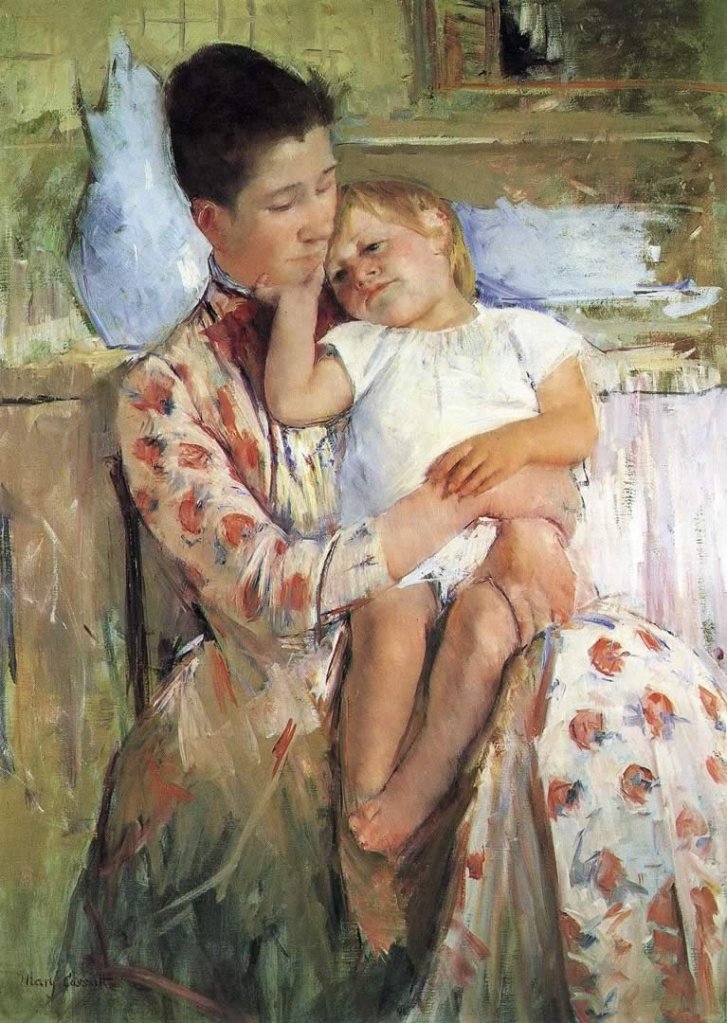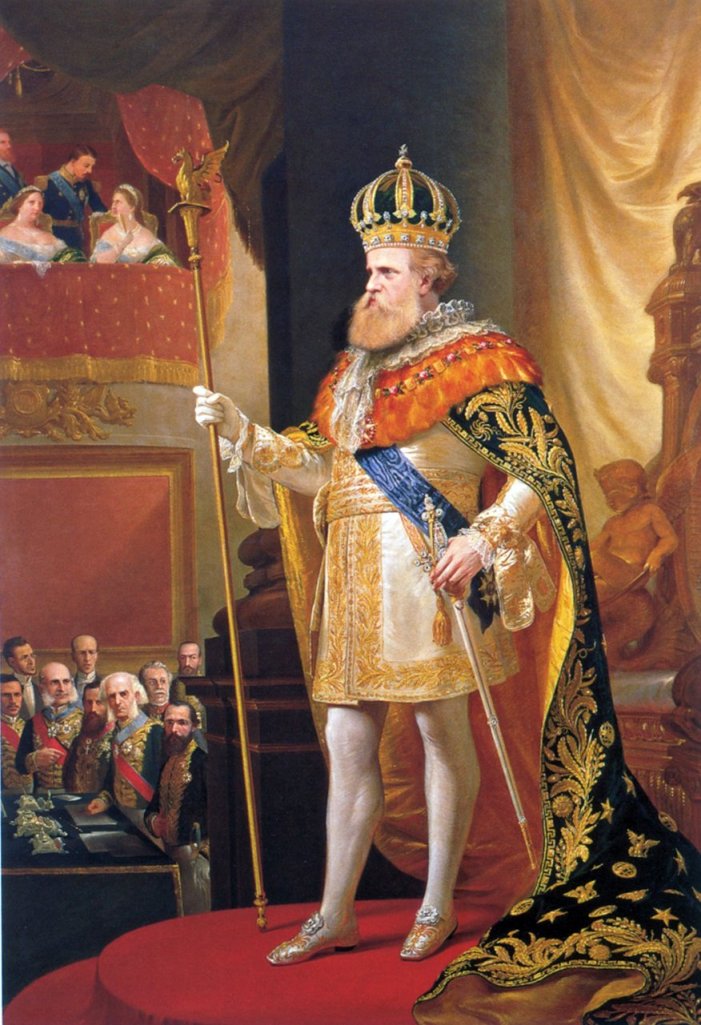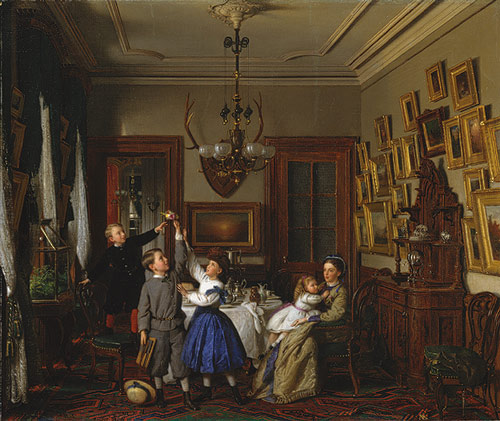Today’s blog came in to being thanks to Lady Luck. Last week I went to London for two days. The first day was spent with my daughter and her new baby leaving the second day free for me to roam around some art galleries. It was March 19th and that was the day of the opening of the Veronese exhibition at the National Gallery. I hadn’t planned my visit to coincide with that day and anyway, I had already checked on the internet to find, not unexpectedly, that I could not book tickets to the exhibition on its opening day. However I decided to visit the gallery when it opened to see what literature they had regarding the exhibition and I was very surprised, but delighted, to be told that I could buy a ticket to visit the exhibition there and then. I jumped at the offer. It was a superb exhibition spread over seven rooms filled with the most magnificent paintings. In my next two blogs, I want to feature some of my favourite works which were on display and look at the background to the depictions, in the hope that I can tempt you to visit this exceptional exhibition.

The first painting I want you to look at was one Palo Veronese completed around 1567. It is entitled The Family of Darius before Alexander. Veronese received the commission for this work from Francesco Pisani, the bishop of Ostia and a patron of the arts, for his residence Palazzo Pisani in Montagnana. It is thought that this monumental work, which measures 236cms x 475cms (approximately 7.5ft x 16.5ft), was hung high up on the wall of the main room (probably the only room which could accommodate such a large work) on the piano nobile, the main floor of the house. Its positioning meant that observers had to look up at the painting and from that viewpoint the depiction of the characters must have been amazing.
The event that is depicted in this work features Alexandra the Great and his first encounter with the abandoned womenfolk of the defeated Persian king, Darius III. The meeting was written about by many Roman and Greek scholars and this work by Veronese was probably based on the writings of Valerius Maximus, a 1st century Roman historian. It is an account of what happened following the Hellenic leader, Alexander the Great’s victory over the Persian army, led by Darius III at the Battle of Issus in 333BC. Although far outnumbered by the Persians, Alexander’s troops won the battle and Darius, rather than be killed fled the battlefield abandoning his family and his troops. Although it may seem strange that the female members of the royal family were at the battle but it was the custom for royal Persian women to accompany their father/husband while they went to war. When Darius made a hasty retreat from the battlefield, without a care for his family, his mother, wife and children were then captured by Alexander. Darius later wrote a number of letters to his conqueror asking for the return of his family but Alexander would not agree unless Darius acknowledged him as the new Emperor of Persia.
In the meantime the female captives, Darius’mother Sisigambis, his wife Stateira and their two daughters, Stateira II and Drypteis were abandoned. In the painting we see the four women meeting Alexander and his friend Hephaestion for the first time. The four women at the centre of the painting are Darius’s family and they have approached Alexander asking for mercy. Behind them stand their servants and a dwarf. On the right we see Alexander, who is dressed in red, standing next to Hephaestion. In between the two parties is an elderly man, dressed in blue, who is introducing the women to Alexander. It is thought that this figure is a portrait of Veronese’s patron, Francesco Pisani. The story of the event tells of the Darius’ mother initially mistaking Hephasteion for Alexander and in the painting we can see Alexander pointing to his friend who has stepped back in surprise at Sisigambis’ mis-identification.
For most of the characters in this tale, all ended well. Alexander married Darius’s daughter Stateira II, whilst his other daughter Drypteis became the wife of Hephasteion. Sadly all didn’t end well for Darius III who, after the defeat, was assassinated by one of his satraps (governors), Bessus, who then pronounced himself King of Kings of the Persian Empire. He was later captured and executed on the orders of Alexander for his crime, regicide.
Veronese’s depiction of the scene arranges the figures gracefully across the surface of the painting, and with the exception of Alexander who wears classical armour, the protagonists are sumptuously dressed in modern fashion. Veronese chose an outdoor setting for the meeting with its classical architecture similar to what he saw in his home town Verona.

The second work I am featuring is one Veronese completed around 1565 and is entitled The Martyrdom of St George. It is a colossal work measuring 431cms x 300 cms (approximately14ft high x 10ft wide). Veronese was probably commissioned to paint this for the high altar of San Giorgio in Braida, a Roman Catholic church in Verona, by the Venetian architect Michele Sanmicheli.
To set the scene I rely on a passage from Carlo Ridolfi, the Italian art biographer, 1648 book entitled Le Maraviglie dell’Arte, (The Marvels of Art) in which he describes the work:
“…in the church of San Giorgio Paolo painted for the high altar the saintly knight on his knees, stripped by henchman, persuaded by priests to offer incense to the idol Apollo, his face reveals an unvanquished soul, unafraid of the tyrant’s threats, strengthened by seeing the Virgin flanked by the Theological Virtues in the sky…”
In the painting we are not seeing the actual gruesome death of Saint George, who was a Roman soldier, but the lead up to his martyrdom. The scene has an architectural background and the it is framed by two armoured horseman who enter the painting at the extreme left and right of the work. Amongst the people we see a couple of men with turbans and a black page boy which gives a Middle Eastern feel to the setting and Veronese may have decided on this as legend had it that the martyrdom of St George took place on April 23rd 303AD in the town of Nicomedia, which is now the north-west Turkish town of Izmit. High up on the extreme left of the painting we see the statue of Apollo which St George has been asked to worship. Behind the statue is the unfurled Roman standard with its acronym in golden letters, S.P.Q.R., derived from the Latin phrase:
Senatus Populusque Romanus, (The Senate and People of Rome)
St George, who is kneeling on the ground, is stripped of his armour, which lies before him on the ground. He is now bare-chested. Look at Veronese’s portrayal of the saint. Look how he has lovingly depicted the saint’s face with a look of kindness which is in direct contrast to the way he has depicted the harsh and ugly faces of the priest and executioner. Behind St George is the priest dressed in a maroon cloak and cowl. He leans towards his prisoner and points to the statue of Apollo and asks St George for the final time to worship the God, Apollo, and by so doing, saving his own life. To the right of, and behind St George, we see the executioner. He is eagerly awaiting the priest decision. The executioner has drawn his sword from its scabbard which he hands back to one of his henchmen. Another man ties the hands of St George. St George is unmoved by the threat and can be seen looking up to the heavens where he sees a vision of St Peter and Saint Paul, who sit either side of the Virgin and Child. Below them are the three virtues, Faith Hope and Charity. Hope, like the Virgin, look down on the soon to be executed St George. Below them we see a small angel heading downwards to St George holding a wreath and palm branch, which are symbols of martyrdom.
It is a very moving scene and one can just imagine the painting in place at the high altar. The observer would have had to look upwards over the altar towards the painting. The observer’s eyes would then catch a glimpse of St George and follow the upward direction he is focusing on, towards Heaven and the Virgin Mary. The painting which is housed in the Roman Catholic church of San Giorgio in Braida in Verona was trucked over to London for the exhibition.

The third painting I am showcasing is another monumental work, measuring 242cms x 416cms (approximately 8ft x 14ft). It is Supper at Emmaus and this often painted scene was completed by Veronese around 1555. The depiction based on the biblical story portrays the moment when the risen Christ, having comes across two of his disciples, thought to be Luke and Cleopas, on the road to Emmaus, joins them for supper. We see Christ at the head of the table being served by the servant whilst at the opposite end of the table sit Cleopas and Luke who have just realised the identity of their fellow diner. This supper scene has been depicted in paintings by all the great Italian painters, such as Caravaggio, Titian, and Tintoretto as well as other European artists such as Durer, Rembrandt, Velazquez and Jordaens. However this painting of the Emmaus Supper by Veronese incorporates into the scene a group family portrait. There are three men, who maybe brothers, a woman, ten children and an infant in the arms of the woman. They are all dressed in contemporary 16th costumes. It could be that is a family who has commissioned the work. Where the work was to be hung is unknown but thought to be in the main hall of one of the new Venetian palaces.
The combination of the biblical scene with a secular scene works well and there is a lavishness about the secular depiction giving it a grand and stately appearance. There is an element of humour about the depiction as we look down below the supper table at the two young girls who play with the large dog. To the left, in the background, we witness a prelude to the supper as we see the two disciples with Christ as they make their way through the countryside to the village of Emmaus and the inn.
It is interesting to note that Veronese liked adding ordinary people into religious scenes and liked to incorporate his love of richness and ornamental embellishment in his religious works as in this painting. However, it was to get him into trouble with the Inquisition, who viewed the combining of secular and religious depictions into another of his painting in which, according to them, he had crowded “irrelevant and irreverent” figures into the work. They took a dim view of it and they looked upon it as a sign of disrespect towards the Catholic Church. I will tell you more about that painting in another blog.

My final offering today is another religious painting by Veronese, which again has been the subject for many of the great painters, such as Caravaggio and Gerard David. It is based on a passage from the New Testament (Matthew 2:13-15) which is a follow-on from the story of the three magi who had brought gifts to the newborn child, and had now departed:
“…When they had gone, an angel of the Lord appeared to Joseph in a dream. “Get up,” he said, “take the child and his mother and escape to Egypt. Stay there until I tell you, for Herod is going to search for the child to kill him.
So he got up, took the child and his mother during the night and left for Egypt, where he stayed until the death of Herod. And so was fulfilled what the Lord had said through the prophet: “Out of Egypt I called my son….”
During their flight the Holy Family stopped for a rest and it is at their resting place that the various artists have depicted the scene. Veronese completed his painting entitled The Rest on the Flight into Egypt around 1572. We see Joseph sitting next to Mary who cradles the Christ Child. They are all in need of sustenance but had nothing to eat or drink. They sit in a palm grove, in the shade of a palm tree, which is emblematic of martyrdom. It is laden with dates but they are too high up for them to reach. Joseph’s water canteen is empty and they have nothing to drink. Then a miracle occurs. The tree bends downwards and we see one young angel dropping down dates whilst another gathers them up to give to the Holy Family to eat, whilst the Virgin Mary nurses the Christ Child. A spring of water appears below them allowing Joseph to re-fill his canteen. Behind the couple is an ass and to the right of the picture there is an ox, a reference to the animals at the manger when the Child was born in Bethlehem. Another young angel can be seen in the left of the painting, spreading out the baby’s clothes on a branch so they would dry.
Light filters through the leaves of the palm trees and in the background to the right the sky is the most beautiful blue. This colour used by Veronese for the skies and clothes in some of his paintings is truly breathtaking and it is what struck me most about his work. In this work, this beautiful rich blue colour is used again for the cloak of the Virgin Mary. Below the sky line in the right of the painting we see ancient buildings and obelisks which are meant to signify the far off land of Egypt, the country to which the couple are heading. It is a truly beautiful work of art.
In my next blog I will look at some more of Veronese’s paintings which were on show at the exhibitions, including some of his smaller works.





































